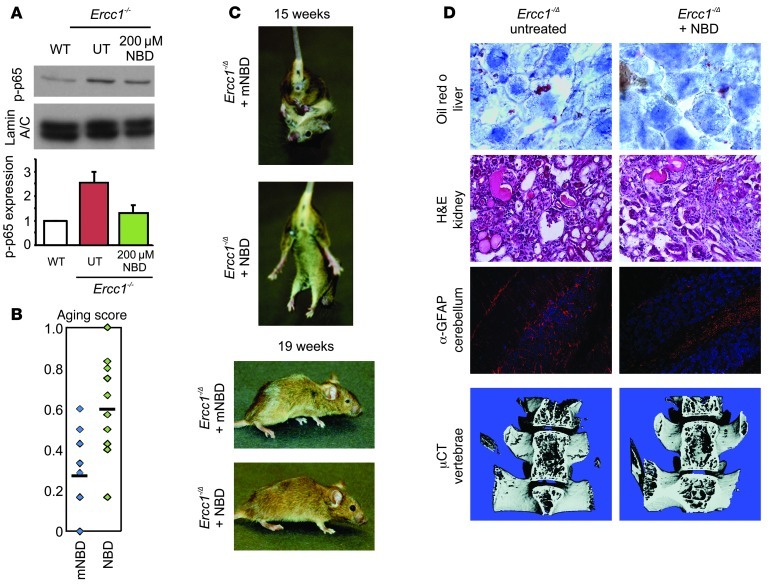Figure 3. Pharmacologic inhibition of IKK/NF-κB activation delays aging symptoms and chronic diseases in progeroid Ercc1–/Δ mice.
(A) Immunodetection of p-p65 in nuclear extracts of WT or Ercc1–/– primary MEFs treated with 200 μM NBD or untreated (UT). Lamin A/C was used as a loading control. The histogram indicates the level of p-p65 normalized to that of untreated WT cells and corrected for loading. Values denote mean ± SD from 3 experiments. (B) Sibling, sex-matched pairs of Ercc1–/Δ mice were treated with 10 mg/kg 8K-NBD or 8K-mNBD i.p., 3 times per week, beginning at 5 weeks of age. The aging score was calculated between Ercc1–/Δ littermate pairs treated with 8K-mNBD (blue) or 8K-NBD (green). The mean aging score is represented by a black bar (P = 0.003, Student’s t test). (C) Representative images of Ercc1–/Δ mice treated with 8K-NBD or 8K-mNBD peptide at 15 and 19 weeks of age. (D) Histopathologic changes analyzed in tissue sections from 18-week-old Ercc1–/Δ mice treated with 8K-NBD or untreated. Liver sections were stained with oil red O to detect neutral lipids (hepatic steatosis; original magnification, ×100). Kidney specimens were stained with H&E to detect hyaline casts and glomerulosclerosis (original magnification, ×20). Cerebellar sections were immunostained for GFAP (red), a marker of neurodegeneration. Nuclei were counterstained with DAPI (blue; original magnification, ×40). μCT of vertebrae to measure bone porosity (for quantification, see Supplemental Figure 3B).

